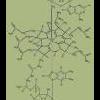-
Posts
1710 -
Joined
-
Last visited
Content Type
Profiles
Forums
Events
Posts posted by mississippichem
-
-
point taken
0 -
I might be wrong, someone correct me or confirm, I think hangovers are caused by the oxidation of ethanol en vivo to acetaldehyde. I have a sneeking suspicion that many low molecular weight aldehyde are arterial constrictors...tension headache. I know that certain ethnic groups lack an enzyme that oxidizes ethanol (ethanol oxidase...?), these ethnic groups have a statistically lower incidence of hangovers. Can't find a citation, but I read it in a peer reviewed journal. Anyone find a reference?
0 -
So I guess they also assume a geocentric universe, seeing as how we have seasons and all. The ghosts of Copernicus and Galileo will haunt them forever! I like the term "universal down force" its witty and brings into question our silly notion of down. Good one Sisyphus
0 -
The equation dG=dH-T(dS), can be used as an empirical test for the concept of entropy. Remember that entropy is not a directly measurable quantity, it is a state function. One cannot measure the entropy in a system but one can detect the change in entropy of a system. I'll give you that yes, this is subject to how you treat the system mathematically. But, when measuring Gibbs Energy of a chemical reaction (dG above), as temperature approaches extreme highs and lows, the calculated Gibb's energy deviates significantly from the observed calorimetry. This is due to the increased term T (temperature) and how it modifies the entropy term (dS) greater and greater. I am assuming the existence of entropy here, sorry about the somewhat circular logic. I understand what you are saying but I disagree respectfully.
0 -
The closest thing I can think of would be other Group IV -OH compounds. "Silanols" contain the moiety Si-OH, and are often found as functional groups on organic compounds. They actually make great precursors to silicones, that is, polymers with the [si-O-Si-O]... linkage. Germanols also exist but are highly labile and a very pH sensitive. Lead can form hydroxo complexes but some of them have fleeting stability as OH^- is a fairly hard base and Pb ions are fairly acids.
0 -
Has anyone else noticed the "theoretical gap" between organic and inorganic chemistry? For example, the geometries of main group, and organic compounds can be approximated with the VSEPR theory. However, this breaks down in the d-block. d-block coordination chemistry requires the use of the Kepert model, Ligand Field Theory, or Crystal Field Theory [Equivalent to MO theory in the main group]. I'm quite familiar with all of this stuff, but it has always bothered me that there is not at least some "pseudo-unified" model of chemical bonding. I understand why none of these theories could work for all compounds, but I guess I just really wish they did. You guys should check out the "chemo-genesis web-book" the author is attempting to unify all chemical bonding by catagorizing all species with 24-types of Lewis acid base interactions (very systematic, quite impressive). He also points out that photo, di-radical, and excited state chemistry do not fit in to his matrix of 24-types. Check this out and give your thoughts. I doubt this is the end all to end all, in chemical pedagogy, but definitely note worthy.
here is the link:
0



P-chem: vibronic coupling
in Chemistry
Posted
Does anyone know of a way to quantitatively express the amount of vibronic-coupling that occurs in a given molecule? I know that vibronic-coupling allows some transitions to occur that are traditionally Laporte [parity] forbidden; and I know how all this works qualitatively. I imagine this has something to do with UV-vis spec. Perhaps there are some "epsilon" values that are typical of these types of excitations? This is not homework, but extracurricular (curiosity killed the cat!). Any insight would be appreciated.